Baseline for Global Warming: March 2017
This page has [hyperlinks] to scientific papers, images and videos focusing on the subject. It is suggested to read the entire article, first, and then you can view any of the sources either from within the context of the article or from the full list at the end of the article.
Introduction to the Baseline application used in this article:
In this information age, access to the world’s information from your phone or computer is awesome, but also a challenge as we need to decide what to believe.
Choosing what information, philosophy, or science to listen to becomes important, and discerning and evaluating which information to act on directly affects your decisions in life. This challenge led to developing an information discerning system (IDS) to draw baselines; not conclusions, but baselines to move forward from.
I have applied my “baseline method” to the subject of Global Warming and am quite pleased and confident with the result. This is also an excellent method and skill for critical thinking which has to be applied when evaluating information. It also provides a framework for organizing information, allowing for efficient access. The following article demonstrates a method of discernment, drawing a baseline, and my story of Global Warming.
Baseline for Global Warming: March 2017
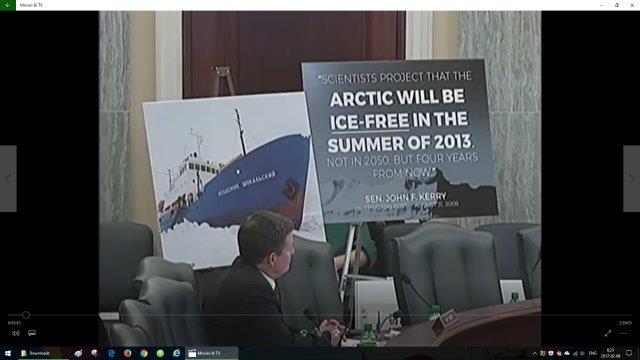
John Kerry’s announcement in 2009 that the artic will be free of ice by 2013 was criticized and called out as “dead wrong” by Senator Cruz. [Senate-Hearing-Senator-Cruz-Chair-Climate-Science-Hearing-160 min Video]
If the advice guiding a world superpower’s leader gets it very wrong, then we have problems. Cruz condemns this and says politicians should speak and act on facts and make decisions based on sound science, and shows the Global Warming science is not settled and that new facts are revealing there is no problem after all.
Is it possible we have another hoax, as some claim, or are the deniers simply being paid off by the Merchants of Doubt and the misinformation Think Tanks? This reminds me of The Piltdown Hoad [The Piltdown Hoax-48 min BBC documentary YouTube], a paleoanthropological hoax in 1912 in which bone fragments were presented as the fossilized remains of an unknown early human, claiming the discovery of the missing link.
It was a big deal and lots of prominent people had emotionally invested in this being true. Sound familiar? It remained the subject of controversy until it was exposed as a forgery 45 years later, and the Geological Society had consensus which dismissed anyone who challenged the claim. Many of the same attributes of this sound like the whole Global Warming debate we now face.
As one commentator said, “Most people have no clue about the science or Earth’s processes, but have very, very strong feelings about it.” How about you? Have you developed strong feelings because of the media or well-crafted movies that don’t explain the science but prey on your emotions? To quote Judith Curry: “It’s a wicked mess.” It’s messy and sadly starting to feel like the ancient battles of Galileo, Darwin, and Piltdown, driven by the elite’s need to control and invoke doom to turn deep feelings into beliefs.
I hope this article will be helpful for the average person who has neither been trained as a scientist nor has a thorough understanding of the scientific method, computer modeling, or the climate change issue itself. Many scientists have spoken out regarding this issue and our leaders are struggling to make policy decisions. I am not sure what value this article would be to politicians, but it can be extremely valuable for individuals to make wise life decisions and deal with controversial topics like this. Gifted speakers showing some graphs telling us what to believe is a problem, and we as people need to be able to sort through, evaluate the information ourselves, and come to some conclusion or, as I promote, draw a baseline to move forward from.
Global Warming alarmists say the world is going to shit and that it is all caused by C02 from us and our way of life (especially if you’re a North American and drive big SUV’s and eat big, thick beef steaks). They have called people that don’t agree “deniers”, which appears to mean they have a different opinion. Well if you’re up-to-date on the subject, then you’re probably confused, and if you’re not, you probably haven’t explored both sides of the debate or just don’t give a shit.
The premise that humans are the driving force of Global Warming and impacting our world in a negative way really started when world leaders set up the Kyoto Protocol, [Kyoto Protocol-Wikipedia] an international treaty which extends the 1992 United Nations Framework Convention on Climate Change.
A few years later, Al Gore came out with his Inconvenient Truth film in 2006. [An Inconvenient Truth 2006-96 min YouTube Video] Other films include Six Degree’s that Could Change the World [Six Degree’s that Could Change the World-96 min YouTube Video] and the beautiful movie Home [Home 2009-120 min YouTube Video], both showing off our planet and the media doing what they do best: Sell news with controversial headlines and the promotion of propaganda. According to the ‘alarmists’, we humans are driving our planet to catastrophic results, heading toward what some say is the ‘sixth extinction’, which is us, the human race.
Soon after, The Great Global Warming Swindle [The Great Global Warming Swindle-96 min YouTube Video], Not Evil, Just Wrong [Not Evil Just Wrong-90 min YouTube Video], and some other videos started combating the issue. Are we doomed to disaster or do we need to better discern the facts and get more accountability and transparency to find out the reality before acting?
“Okay,” I thought, “Stop panicking and reason some more.” Ask yourself, “Did I just jump on a bandwagon and ignorantly align with what people have said on TV? Be wise and step back a little to gain some perspective and sort through this a little more and apply discernment.”
After a more exhaustive study of both camps and applying some discernment, I found an incredible amount of science and scientists providing an alternate view all the way to full blown conspiracies. Then the Climate-Gate leak [Climate-Gate – Wikipedia] emails revealing the actual conversations of scientists and their uncertainty of the data, their discussions about how and why the IPCC is manipulating the data to come up with this so-called “97% consensus”.
Well, in this study I found there are many climate scientists [31487 Scientists say NO to Alarm-16 min YouTube Video] and many are testifying to their governments that we need to rethink this issue. “The Earth is not at the center of the universe” and they better make decisions that are going to affect us all based on science, not some geopolitical agenda. An Intelligence Squared debate in 2007 [IQ2US Debate Global Warming Is Not A Crisis-99 min YouTube Video] shows, when exposed to alternative opinions, the public, too, starts changing their mind. Then, a poll in 2014 revealing international responses and a poll of just what people are concerned about demonstrates changing perceptions.
It is confusing when you have a broad spectrum of facts to look at, but for me, this presents an opportunity to learn. Don’t feel bad if you’re confused on this subject because even the experts and politicians are confused, and they are about to make policy decisions that could dramatically affect the world and economies, especially that of poorer nations which seem will be most affected.
It’s a big issue and we individuals have to come to some conclusions in our minds to have a certain level of peace, avoid personal conflicts, and make good decisions for our family and life. We want to have integrity and make decisions we can be proud of that create more meaning in our lives, so it is equally important for individuals to sort this out.
I offer a baseline approach. Not a conclusion, but an intellectually honest baseline that empowers our life decisions, a line we can draw to grow from.
Analogy: Black & White Dog Fighting
If you listen to either opposing view enough, you will begin to believe it. Let me use an analogy to illustrate this point. This is the story of this wise old man who lived out in the country.
Once a week, the old man would come into town with his two dogs. Both dogs were of equal size and of the same breed; the only difference was that one was white and the other black. He would challenge people to bet on which dog would win in a fight. He did this on a regular basis and to everyone’s surprise, a different dog would win and the owner would always guess correctly.
One day, a young boy asked him, “How do you know which dog is going to win?” The old man replied, “It’s simple: For a week before the fight, I feed only the one dog I want to win.”
The moral of this story is, whatever you feed your mind the most will dominate your belief. If you are developing a belief system about a particular subject, philosophy, or idea, and feed your mind one-sided information, then that view will dominate your belief and increase your bias. You will tend to dismiss any information that doesn’t fit your belief and seek information that confirms your biases. That only strengthens your ‘confirmation bias’ [Confirmation Bias – Wikipedia] and doesn’t serve to solve problems.
I am promoting a healthier perspective and a unique process for dealing with this subject. Please understand I am able to draw a baseline on this subject because I have put in hundreds of hours studying this subject and have been developing and refining this Information Discerning System to draw Baselines, so I am better able to gather and discern the information, recognizing my biases throughout. The principles of process can be applied to other subjects or big life decisions.
Summary of the Baseline Application:
- Baseline Step 1: Your personal experience related to the issue. (Connect the issue to your experience and context of life. Be aware this will be your bias.)
- Baseline Step 2: Context. Gather information on both or all sides of the story, history, and current status. (Be willing to discount your bias to gain a broader, healthier perspective.)
- Baseline Step 3: Review the science and empirical evidence from credible sources, and be aware there is a lot of junk on the Internet. (Look at claims tied to actual scientific studies, fact check, and check sources.)
- Baseline Step 4: Evaluate the information and draw a baseline based on your current understanding. (Understand that this is a place to grow and move forward from, hopefully with a more open mind and respect for the many perspectives.)
- Compile your Resources & References: Keep track of your data, your story, and how you came to this baseline.
- Be open to change and grow as more data, science, and understanding emerges.
This baseline ends with a [Full-list-of-Resources] for this article, but of course, my file folder has dozens of other related reports, videos, and information that was reviewed and used to draw this baseline.
- List of all the videos (about 50 hours of video)
- Gallery with images [Global-Warming-Image-Gallery]
- Supporting documents and reports
Baseline Step 1:
Our personal experience and observations: Here is my relationship to C02 and the Canadian climate.
From my 50 years’ experience of life, Global Warming made sense, but alarmism certainly didn’t. I was born in 1962 and raised in Calgary, Canada, and remember long, cold winters with lots of snow through the 70s and 80s, starting as early as September and not leaving until Spring, except when the odd chinook blew in and melted snow. I remember having to shovel snow from our driveway and sidewalks, experiencing 1, 2, and 3 feet of snow. Even the odd winter when cold and heavy snow would close the schools.
By the time I left Calgary in the 90s, we had much less snow and I don’t remember schools every closing. I could ride my motorcycle some days as early as February and experienced the odd ‘brown Christmas’, so my experience was definitely a change of climate and a warming of the Northern Hemisphere.
There was nothing sudden and the weather was always different with two or three big snow dumps, some minus 30 days, plus cold and warm snaps called ‘chinooks’ every year. Without being told what to believe, I would say that Canada was warming and had less snow, and that the climate always changes. Nothing dramatic in my life, but the odd freak storm like the Great Ice Storm [Great Ice Storm of 1998 – Wikipedia] that hit eastern Canada in 1998. Since then, things were quite normal with nothing much to report. I have been in China 13 years now and it too has been very stable with no discernable change year by year. Interestingly, my Chinese wife also says that when she was growing up, she had much more snow; so she, too, has experienced similar climate change.
I was briefly familiar with the Kyoto Protocol from the basic news sources, but didn’t really understand it or connect the problem to me as an individual, and so didn’t think any more about it. After watching An Inconvenient Truth [An Inconvenient Truth 2006-96 min YouTube Video] in 2008, I got caught up by Gore’s story as it seemed the world was heading for disaster, and I was just about to start a family.
I am not a scientist nor a skilled researcher, but felt I should better understand and did some due diligence, searched for some understanding unable to discern the results from the IPCC, and discovered a Canadian public policy think tank called the Fraser Institute [Fraser Institute – Wikipedia] who produced a report [Fraser Institute Independent Summary of IPCC Summary for Policymakers 2007-PDF 516 KB] that summarized the IPCC Assessment Summary from 2007 [IPCC 2007 Assessment Summary for Policymakers], making it more understandable to a layperson. I dismissed the problem once again as it described the cycle of the climate which matched my experience described above.
Supporting western companies to have goods manufactured in China, I had several opportunities to be involved in “green” products, and got involved in some solar technology and LED lighting, but ended up in air filtration. With a new baby, of course I put a lot of attention on my immediate environment, my home, and office where I spend 95% of my time in the short winter and 75% of my time in the 6-month summers.
Being involved in air filtration, “air quality” became my focus and I started studying and applying various techniques to improve my home and office. The only real air quality measurements I had were the AQI websites [Air Quality Index – Wikipedia], but I had no idea whether I could trust the numbers or not and, truthfully speaking, had no idea what the numbers meant.
I decided to get more serious and purchased a few air meters to measure some key gases and started monitoring and learning. I spend dozens of hours viewing indoor and outdoor air quality and built a portable test kit so I could measure 02, 03, C02, temperature, and humidity in various environments and conditions.
I was immediately surprised to learn what C02 actually measures in my home, office, and the various other locations I tested. In my home, C02 measurements before going to sleep are about 700ppm, and when we wake up are about 900ppm – So a fair bit of build up over the night from our breathing. When I get to the office every morning, it measures about 600ppm +/- 50ppm. During my exercise routine, C02 rises to 900-1100ppm. For every person that comes to the office, the C02 rises about 100ppm or so. Here are some measurements from my office in the morning during the month of June, 2016.
I became even more surprised that when I breathe into a zip-lock bag and put my meter in it, it measures 5010ppm. I tested several of my friends and, of course, we humans breathe out 5000ppm of C02. I tested my new car and, to my surprise, tests the same as our human breath!
Well, that is a little confusing as I don’t hear anyone talking about the 7 billion of us breathing out the same as our cars? I did find some research that says we take in and use equal amount of CO2, so it cancels out; but that, too, doesn’t make sense as I know I am only breathing in 600-700ppm and breathing out 5000ppm, so I guess more study is required on that point.
What I do get from these tests is that C02 varies greatly, which has led me to better understand the relationship between C02, my immediate environment, and this whole issue of C02 causing Global Warming.
Apparently, the composition of our atmosphere is 78% Nitrogen, 21% Oxygen, 0.9 % Argon, and 0.1% a bunch of trace gases in which C02 is included.
Of these 0.1% trace gases, C02 makes up only 0.038% of our atmosphere, which is reported as our current atmospheric level of C02, or 380ppm as most commonly reported. Graphs like this appear in big name media articles and on websites and, now, I understand even this to be wrong as it doesn’t include water vapor, which constitutes a much larger percent and is a bigger driver of Global Warming as “the scientists” claim, but I will bet you don’t hear much of that.
Even with an inaccurate graph that doesn’t take into account water vapor, what the alarmists are talking about is such a small percentage of the air it is hard to believe it can make any difference at all. Another fact is the health benefits to humanity from increased C02. To get plants to grow, healthy greenhouses install C02 burners to increase C02 to 1200ppm, otherwise, they say, you will just not be productive. With even a little research, it is clear that increasing C02 is beneficial for plants and animals, and helps make our planet greener and fuels one of the big carbon sinks, the plants, trees, and grasslands.

Okay, it is clear that climate changes. Of course, it always has and it should also be clear that C02 is not a pollutant, but a beneficial gas and we carbon-based life forms wouldn’t be able to live without it. C02 itself varies a lot as you can see, so it seems the big problem is whether an increase of it 5-10 kilometers up in the troposphere is the “force or driver” warming the planet?
We seem to be debating whether this small amount, the small increase, is the cause they claim that may drive humans to extinction. To summarize the “small” effect, let Illinois Representative Shimkus’s explanation to a Health Agency that doesn’t have a clue of the numbers [Rep. Shimkus questions impacts of man-made CO2-7 min Video]. This is another example of agencies that impact policy makers but don’t seem to have a clue on this subject.
That convers my personal experience, so now let’s look at some of the dozens of hours and testimonies of experts.
Baseline Step 2:
The current context (getting up-to-date on both sides)
Simply getting up-to-date on any subject can be a real challenge as you really can’t just put “Global Warming” or “climate change” into a search engine and expect to get good information. The Internet is full of inaccurate information and ignorant opinions, so we really need a way to discern valid from non-valid opinions.
I have reviewed over 40 presentations, adding here what I thought were reputable, some controversial, and even one or two pointing to conspiracy to push our biases. If your’re not open to reviewing the other side of the debate, then you really need to check if you’re fulfilling your confirmation bias or insecurities in support of a particular belief system.
The Deniers:
Judith Curry, a climate scientist and professor, provided an excellent professional overview of the current state of the climate debate and is very proactive to drive dialogue with both the scientific and public towards a better understanding. [Judith Curry – Climate Science and the Uncertainty Monster-57 min YouTube Video] Judith Curry also testified at a Senate hearing [Senate Hearing-Senator Cruz Chair Climate Science Hearing-180 min Video] starting with her statement: “Prior to 2009, I thought that supporting the consensus on climate change was the responsible thing to do. I bought into the argument: Don’t trust what one scientist says, trust what an international team of 1,000 scientists have said after years of careful deliberation. That all changed for me in 2009 following the leaked Climate-Gate emails that illustrated the sausage-making and even the bullying that went into making the consensus.”
I highly recommend her perspective as she is not oil-funded and is a credible climate scientist who promotes transparency and accountability through her blogs and dedication to the subject.
Matthew White Ridley is a British journalist and businessman best known for his writings on science and the environment. [Matt Ridley Global Warming vs Global Greening-40 min YouTube Video] At the UK Royal Society, Ridley demonstrates how the planet is greening and discusses other benefits from increased C02 in the atmosphere.
Dr. John Christy, an Alabama State Climatologist, talks to a group of students telling them the data he presents has been submitted in court at Senate hearings and shows the science isn’t settled, and how this debate has gone from a science issue into a moral and political issue. [John Christy on The Economics and Politics of Climate Change-66 min YouTube Video] (This video contains a nice Q&A session at the end, and it’s always nice to hear questions from younger generations.)
Patrick Moore, an environmentalist, has a powerful story as he is an Ecological Scientist and Environmentalist Activist who cofounded Green Peace, leading the stop of nuclear bomb testing in the 60s. An incredible man with a hell of a story, he brings his knowledge and experience together to deny the alarmist claims. Here is one of many talks you can find of Dr. Moore. [Patrick Moore Human CO2 Emissions are Wholly Beneficial-42 min YouTube Video]
Dr. Roy Spenser is a research scientist with the University of Alabama: I particularly like this guy because he is a Christian New Earth Creationist, and at the 24:10 min. mark [Senate Hearing-Climate-Change-is-it-Happening-Scientist-Testimony-48 min Video] was asked a valid question: If he believes in Creation over Evolution, whether there is more science to support a 6,000 year-old creationist view over biological evolution.
He responded that there is not enough evidence to support biological evolution. A valid question because as far as I am concerned, if you believe the Earth is only 6,000 years-old and that god made it look real old, then it is hard to believe his science on Global Warming. The other side is that if he is a true believer, then we should be able to rely on his testimony being honest.
Anthony Watts is a broadcast meteorologist most famous for his blog [What’s Up With That-Wikipedia] relating to climate. He challenged NOAA to consider the sites of our ground-based thermometers as so many of them are located in heavy urban areas, airports, car parking lots, and next to buildings which dramatically affect measurements. [Climate Fraud – NOAA’s Global Temperature Dataset-Anthony Watts-15 min YouTube Video]
Dr. Richard Lindzen was a contributor and lead author on the 3rd Assessment report, comments on the IPCC saying: “It is a funny sort of operation that is a little bit tilted,” and continues to explain his perspective. [Interview with Professor Richard Lindzen-48 min YouTube Video].
Tim Ball takes this topic into a logical conspiracy theory. Consider Ball’s experience in life and his scientific expertise while he makes a good case for the hoax. He has a valid point and drives for more transparency and accountability in the organizations that produce data and how policies are formed. [Tim Ball – Human Caused Global Warming – The Biggest Scam In History-48 min YouTube Video]
Mark Steyn is a passionate and articulate journalist being sued by Michael Mann for calling his “hockey stick” graph a fraud, an abuse to the scientific method, and an issue of free speech. [Mark Steyn – The Fraudulent Hockey Stick – 10th ICCC-48 min YouTube Video]
- Richard Keen [Climatologist Dr Richard Keen – Show Me The Data-70 min YouTube]
- [The Challenge of Climate Change Prof Brian Hoskins (May 2016)-90 min YouTube Video]
- Easterbrook: [Dr Easterbrook Global Warming HOAX _ Facts-85 min YouTube]
- Jon Lloyd: [Professor Jon Lloyd (Life Sciences) – Going brown or getting greener-46 min YouTube Video]
- Professor Denis Rancourt: [Professor Denis Rancourt Simply Climate Change-120 min YouTube Video]
- Nobel Laureate Physicist Ivar Giaever: Global Warming is the New Religion [Nobel Laureate in Physics-Global Warming is Pseudoscience-32 min YouTube] the way in which people are engaged in this subject.
- [Evidence-Based Forecasting for Global Warming. J. Scott Armstrong, Ph.D-60 min YouTube Video]
US & Canada Senate hearings leading to policy:
I personally am quite ignorant about the political processes and what actually goes on in our courts and hearings that influence our policy makers. I had some experience leading a non-profit organization in which I learned you cannot please everyone and have to strive to make the best decisions you can based on the organization’s vision and mission.
Since then, I have always felt for our leaders when they are making decisions and understand the great challenge they have with the variety of opinions and feelings of the public. This subject is a great challenge as politicians have to rely on the convoluted information they can gather, try their best to sort through the facts, and come to some sort of conclusion.
It really seems like a joke when organizations like The Sierra Club [Sierra Club-Wikipedia], an environmental organization in the United States and one of the first large-scale environmental preservation organizations in the world, currently engage in lobbying politicians to promote green policies. The current chair, Aaron Mair, doesn’t even seem to know the basics facts of this issue. It is really sad to watch Cruz [Senate-Hearing-Cruz-Questions-Sierra-Club-President-Aaron-Mair-Climate-Change-10 min Video] ask basic questions to which the leader of this organization that is influencing policy can’t even answer basic questions.
Senator Cruz ends the senate hearing [Senate-Hearing-Senator-Cruz-Chair-Climate-Science-Hearing-160 min Video] with 8 of what he calls facts (actually, he names only 7):
- Carbon Dioxide is, rather than being a pollutant, good for plant life. (greening our planet)
- The Earth, right now today, is greening.
- That for significant periods in history, there has been markedly more C02 in our atmosphere and that was prior to the industrial revolution, so it could not have come from the burning of fossil fuels.
- For the last 18 years, the satellite and weather balloon data both demonstrate no significant warming whatsoever. That fact in particular, not a single democratic senator had a response to.
- That the satellite and weather balloon data is the best data we have on whether warming is occurring and that evidence, the actual data, demonstrates that it is not.
- That the seas were rising more in the first half of the 20th century prior to the significant increase in carbon dioxide emissions than they are now.
- That the computer models that are telling us we need to raise every hard-working American’s electric bills, gas bills, and cost of living, and that we need to make it harder for single moms, for immigrants, for African-Americans, Hispanics, and for every hard-working men and women to make ends meet. The computer models are profoundly wrong, not a little bit wrong, but profoundly wrong.
Two full US Senate hearings can be viewed here:
- [Senate Hearing-Climate-Change-is-it-Happening-Scientist-Testimony-48 min Video]
- [Senate-Hearing-Chafee-Climate-Alarmist-brings-little-evidence-then-absolutism-20 min Video]
Being Canadian, watching our leaders deal with this debate was equally revealing of the challenge in policy-making, and now I have much more appreciation of why Canada forges ahead with pipelines and the big oil projects like the Athabasca Oil Sands [Athabasca Oil Sands-Wikipedia]. I have a clear bias in favor of Canada and would be pleased if carbon-driven Global Warming would be bullshit because we (Canada) are a large knowledge-based country with lots of oil.
Ross McKitrick, Professor of Economics at the University of Guelph specializing in Environmental Economics, has published on the economics of climate change, statistical analysis, and was an expert reviewer on the IPCC’s 4th Assessment Report, and so is fully qualified to provide his testimony and advice to the Canadian government. In the hearing [Senate-Hearing-Canada-Climate-Science-Economics-Hearing-2011-12-15-120 min Video], McKitrick also describes the reviewing process and the biases of the organization and the pressures for reviewers to “tow the party line”, all explained in the first 7 minutes of his testimony. The hearing continues with multiple climate scientists who provide their testimony on the science of the issue.
McKitrick claims that of the 195 member countries that make up the IPCC, the vast majority don’t read the papers nor submit comments; and of the comments received, over half came from two countries, the USA and Australia. Most of the member countries send bureaucrats, not scientists, as delegates.
At the 1 hour 15 min mark, Senator Tommy Banks says he likes to apply the “precautionary principle”, considering to prepare to act without having proof, then presents 4 extreme scenarios that could result:
- We do nothing and nothing happens. (A win.)
- We do nothing and the worst happens. (Big lose, leaving an inhabitable world for our children.)
- We do everything and nothing happens. (A big lose.)
- We do everything and as a result we save the world. (That’s a big win.)
The senator sets up a context by asking that, for our grandchildren, which of these would you choose? Where would you place your bet?
McKitrick replied that he had made a proposal and describes creating a small carbon tax tied to the value of atmospheric temperature measurements, leaving it to the future results and people deciding which is the most credible story, with the Government not having to commit to either story. Basically, having made a good decision regardless of the outcome to which banks reply: “Being right, now, matters and the outcome is very attractive to politicians.” This hearing has been very enlightening and I highly recommend that you watch it along with the US senate hearings.
You have to understand the actions and practices described by PhD author Naomi Oreskes. The 2010 book, Merchants of Doubt [Merchants of Doubt – Wikipedia], followed by the 2014 movie of the same name [Merchants of Doubt-90 min YouTube Video], traces the use of public relations tactics that were originally developed by the tobacco industry to protect their business from research indicating health risks from smoking.
Oreskes describes how Global Warming deniers are applying the same strategies outlined in the book. In a more recent interview, Oreskes [Science for the Public – Creating Public Doubt about Science – Interview with Naomi Oreskes-60 min YouTube Video] talks about when people challenge scientific issues, they found a pattern in not only the form of questioning but also the same people and organizations behind it. These organizations are well-known and often cited in the debates on this subject, and are heavily used in movies like the 2016 movie, Before the Flood, which Leonardo DiCaprio narrated [Before the Flood-95 min YouTube Video], and to which I have some comments on below.
It is a powerful book and reveals the level of sophistication of the Think Tanks and Front Groups with their professional-looking websites, credible scientists that produce excellent-looking reports with all the graphs, and sources to impress and create that doubt.
I was impressed, too, when I read the Fraser Institute Independent Summary of IPCC Summary [Fraser Institute Independent Summary of IPCC Summary for Policymakers 2007-PDF 516 KB], who is listed as one of these organizations. These groups, Oreskes explains, are not just to confuse the public on issues, but also for internal corporate misinformation so that sales people don’t know the facts, leading them to doubt their own companies. Top executives often withhold and, in some cases, manipulate information to prevent internal dissent. On this point I personally feel corporate executives and government policy-makers should be held criminally liable if caught changing, distorting, or manipulating information and lying to the public.
Awakened by The Merchants of Doubt, you realize you may be being tricked by the well-crafted websites and responses of the deniers – they are all funded by think tanks and big oil and you can’t believe any of it. Well, of course this is a valid perspective and needs to be taken seriously, but after going through the “denier” views, you are likely to start believing that Global Warming is completely misunderstood, that you have been misled by the media (duh) and the underlying agendas from the IPCC and other governmental agencies. The movies are all hype and emotional, and you might even be a little pissed by now.
At this point, I would like to remind you of the Black and White Dog analogy spoke of above and the strategy Oreskes points out of inducing doubt and creating confusion if you have shifted positions. It is a normal human response and function of our brain, so let’s be aware of these processes and move on with the article.
The Alarmists:
To be honest and show my bias, I will not represent this side of the debate with the fullness one could because I couldn’t easily find scientists presenting lectures. It seems to be settled on their end and now the world is subjected to movies and films that play to emotions and feelings rather than present facts and figures.
Even with awareness of the Merchants of Doubt, it sure seems as if it is not the deniers but the alarmists that have fallen prey to towing the party line, or have watched too many of the movies and are connected by emotions, not facts. I am going to share my perspective from re-watching some of the following programs and you will notice that not one scientific paper is cited, and it should be clear that these films are well-crafted to stir your emotions instead of appealing to your intellect.
Intergovernmental Panel on Climate Change: The IPCC
The IPCC is surely got to be the way to go, bringing the globe together to deal with a global problem, right? Or is this the forming of another bureaucratic organization driving a hidden agenda? For the most part, I have to think the organization’s goals and mission are good for mankind. I personally have little confidence in politics and politicians and support this organization, but expect transparency with the facts and accountability on their actions. The explanation of the organization’s goals is very encouraging and seems to be what the world needs to solve global problems like this.
In an interview at the 2015 IPCC COP19 conference [IPCC-COP19 Nick Dunlop Secretary-General Climate Parliament-11 min YouTube Video], the secretary general, Nick Dunlop, was asked what the objective of the organization is: “So, you have members of parliament ,who are most of your organization, whose mission is to promote renewable energy?” He answered: “That’s right. We are working with members of parliament of quite a number of countries around the world.”
It’s basically a well-funded and well-politicized organization driving renewable energies, and you need to keep in mind that the world has enabled the IPCC to take the lead and focus on the 10% part of our energy production believing it is our best solution.
Just like the Global Warming films, even the IPCC starts their Science Basis video [IPCC-Climate Change 2013 The Physical Science Basis-10 min YouTube Video] with images of disaster and neither cites nor reference one scientific paper.
Only the comments quote “the science is stronger than ever”, which I guess we people have to just accept or go and read their reports and see if we can figure out the facts. It is simply an organization with a goal and mission, so we can be certain they select and promote the papers that support their view point, which is clearly an absolute. All the reports can be found on their website [http://www.ipcc.ch].
Paris 2015:
In February, 2016 at the Grantham Institute, a panel discussion was held to discuss the outcomes of what happened in Paris in 2015-Cop21. [What did COP21 in Paris really deliver, and what do we need to do about it now-73 min YouTube Video]
It really is awesome what has been accomplished and what is being committed to by bringing representatives from almost every country in the world. Sir David King, Chief Scientific Advisor to the UK Government, summarized the commitments in the below slide.
That is $100 Billion per/year contributed from developed nations to developing nations to reduce emissions and adaptation. He continues to say this “new low carbon sector” is a 2-3 trillion dollar per/year business, making it the largest sector in world history. Trillions of dollars are being invested with commitments from 195 countries is really is an historical point in history and we can only hope there will be a much higher level of accountability and transparency as this bus has already left the terminal and doesn’t look like anything is going to stop it.
More encouraging, from my perspective, is when King said Bill Gates came in and said he would put a billion dollars on the table –not from his foundation, but a personal contribution – then turned up in Paris with 26 other billionaire friends each promising to contribute something similar.
On a side note, it is inspiring to see the action of Gates, his foundation work, and his public announcement that he will donate 95% of his wealth to worth-while causes and encourage others to follow. [Bill and Melinda Gates why giving away our wealth has been the most satisfying thing we have ever done-25 min YouTube Video]
Alarmist Scientists:
Actually, I found very few real alarmist scientists, most are much more conservative in their claims, and it should be clear there is certainly no consensus as I list a dozen scientists above and a denier organization [International Conference on Climate Change-Wikipedia] created a petition claimed to be signed by over 31,487, scientists so you must throw out the idea of ‘consensus’. [Global Warming-31487 Scientists say NO to Alarm-16 min YouTube Video] The so called “consensus” was also created by the IPCC, who is obviously a fully renewable-biased organization.
Michael E. Mann, the author of the “Hockey Stick” graph, was famously used by Al Gore and is now in court with Mark Steyn. Mann is suing Steyn for publicly announcing his graph is fraudulent and that Mann’s science is an abuse of the scientific method. It gets worse as there are implications in the Climate-Gate emails that he manipulated the data to create the graph.
I hope the truth comes out and he is punished to the full extent if he lied or is vindicated and continues with his career. Watching Mann’s 2016 presentation in Iceland [Dire Predictions Understanding Climate Change– the Earth101 lecture-Michael E. Mann-35 min YouTube Video] was quite lame. In fact, he never citied any scientific paper; the only paper he cited was the newspaper.
Al Gore and the film the Inconvenient Truth is also equally lame scientifically, as not one scientific paper was citied. However, the film was extremely well-crafted, bringing in his sick child, the family’s abandoned farm, and many other emotional images to sway the public, which led him to sharing the Nobel Peace Prize with the IPCC in 2007.
I would like to think that Gore is sincere and deserving of the Peace Prize, but it is really troubling to hear in the House Energy Subcommittee hearing from the 8:27 to 10:48 min mark [Al Gore’s Inconvenient SCAM, Lies versus Lord Monckton Truth and Logic-100 min YouTube Video], which confirms Gore’s partnership in the investment in Kleiner Perkins venture capital firm, which invested a billion dollars in 40 companies that are going to benefit from cap & trade legislation.
You have to ask whether he produced the film before becoming a partner in Kleiner Perkins or after, as no human can help but be fully biased when you have huge investment involved.
Then, in an interview with professor Richard Lindzen [Interview with Professor Richard Lindzen-48 min YouTube Video] from the 13:07 to 16:00 min mark, Lindzen commented on his experience with Al Gore in the early days dealing with people that challenged his motives, that he was just not being that nice like he is portrayed in his film. Furthermore, Alex Jones, who has strong opinions and sees the conspiracies in everyone, tears him apart in this short talk: [Al Gore-Climate Change Lies Exposed-Alex Jones-20 min YouTube Video].
Of course, people are human, with all our weaknesses, and we all have had our days, even seasons, when we are not acting with complete integrity. We all have our biases, but eventually come to our senses so one can only hope that Gore is sincere and corrects any mistakes he has made as he moves his agenda forward. Even if there ends up being no need for alarm, he surely helped raise awareness of the environment, our planet, and individual people’s responsibilities, to which credit is due.
Leonardo DiCaprio narrated the 2016 film Before the Flood [Before the Flood-Wikipedia] which, like most alarmist movies, start with images of disaster. This film is Hollywood at its best, emotionally grabbing you by starting with DiCaprio talking about a painting “The Garden of Earthly Delights” he claims was above his crib when he was a baby, then describes the story from the Garden of Eden to sinfulness to Armageddon. This is just what the church has used to control people throughout the ages: That mankind is born bad, evil, and destroys the world. What a powerful way to set up your mind. At the 6 minute mark, a Fox News commentator says: “Who better to educate world leaders on ‘made up climate change and a crisis that doesn’t exist’ than an actor from Hollywood.”
Statements like, “Once you invest in wind and solar, you have free energy forever” is bullshit, as the manufacturing of wind towers – which I have experience with here in China – is the most expensive power to build, requiring huge resources to manufacture towers, then expensive generators let alone the land and costs to maintain them. Nothing lasts forever, especially steel on mountain tops.
He looked quite humbled in front of these developing world people, especially the famous Indian activist Sunita Narain, who pointed out the electrical consumption of the average American compared to others around the world and tried to say that she hopes the West’s “investment in Solar and Wind will solve the problem”, as she shakes her head listening to this guy. I only wish she would have shown him the amount of resources, the size of the carbon foot print of the rich people like himself, and that growing gap of inequality.
DiCaprio touring Elon Musk’s Tesla Gigafactory [Gigafactory 1-Wikipedia] was inspiring, with claims to have done the calculations to transition the “whole world to sustainable energy.” Like DiCaprio said: “Is that all? Seems so doable.” Nice speech at the end and looks like DiCaprio is the new messenger of peace for our salvation, the Pope seems to be with him and imagine he is in line for the next Nobel Peace Prize. If he is as passionate as he claims, I wonder if he is forming a foundation or donating his wealth like the Gates’ and Buffet’s.
I watched this PBS Documentary hoping to get some science, as they claim in the title [The Signs and Science of Global Warming-55 min YouTube Video], but it, too, is utterly lame: Not one study cited and what seems like the strategic use of some no science pretty women with the video cut half way above her breasts. Basically, just a film about ground-level pollution complaints correlating to what is going on 100 kilometers above. So, enough with the movies and documentaries, as next to the media it really is a lame source to get informed and help make decisions in life. Good for entertainment, but needs serious discernment as not to load you with unreal biases.
Brian Cox is a brilliant physicist and science promoter with the BBC who I highly respected for his work with the BBC on Wonders of the Universe [Wonders of the Universe], followed later with Wonders of the Solar System [Wonders of the Solar System] in which he shares his physics expertise, helping us further our understanding of space.
I liked how he communicated the unknown and the need for science to continue its process to deepen our understanding, but when it comes to Global Warming, he seemed to lose all scientific objectivity. It is not even within his area of expertise, and recently said on a Q&A panel discussion [Q&A – 2-Professor Brian Cox explains climate science to denier Australian Senator Malcolm Roberts-13 min YouTube Video] when asked about the science, says, “The absolute, absolute consensus is that human action is leading to an increase in average temperatures, an absolute consensus that can’t be argued with.” Then holds up a graph like it is the ultimate proof; and his second graph is Al Gore’s 500,000 year carbon correlation and arrogantly says he can give Malcolm a lesson if he wants, like someone that doesn’t even appreciate the complexity or the scientific process.
I have lost all respect for him now and will be very skeptical of any science he speaks of in future documentaries. It seems as being involved in media productions and becoming somewhat famous has understandably affected him.
David Suzuki, Canada’s most famous science presenter, is winding down his career and touring the world with his powerful Legacy Speech. [David Suzuki An elder’s vision for our sustainable future-83 min YouTube Video]
Undeniably he makes some key points relating to perspectives I feel strongly about and apply to my life on a regular basis, but I do have a problem with these rich, gray haired folks going around the world telling us we are at the 11th hour, 59th minute without providing any solutions. His credibility kind of all goes out the door when we learn he has partnerships with an oil company, multiple homes, tons of money, and charges outrages fees, so Canadian Ezra Levant claims. [Ezra Levant-Sun News confronts and reveals David Suzuki-54 min YouTube Video]
A local friend of mine watched his legacy speech and was taken in wanting to join his foundation when returning to Canada, but got turned off after signing up online and found little opportunity to act and received constant solicitation to buy products. He watched Ezra Levant and immediately asked to be taken off the list, seeking a more transparent organization to join.
Professor Richard Alley of Penn State University is an expert on ice, specifically ice cores. His team drilled a two-mile-long ice core in Greenland containing 100,000 years of climate. On the 2006 Naked Science program [Naked Science – Big Freeze-50 min YouTube Video], Alley claims climate was usually nice and smooth, going up and down with sometimes a big change for one year.
The climate swings wildly between two extremes making it unpredictable, but anticipates a “big freeze.” Professor Lonnie Thompson of Ohio State University, also an ice core expert, correlates temperature drops with volcanic eruptions from Alley’s Greenland cores.
The documentary says scientists claim that “Global Warming” could mess with our climate, melting the ice sheets which could desalinate the oceans, stopping the conveyor thus sending England and northern Europe into a freeze.
Since a lot of the air composition evidence comes from ice cores, it is certainly well worth getting more facts from this science which Alley presents at the 6th Annual J. H. Carlson Lecture in 2016, titled “Big Ice: Antarctica, Greenland & Boston.” [Big Ice Prof Richard Alley (October 2016)-77 min YouTube Video]
Baseline Step 3:
The evidence (scientific and empirical)
When talking about “the science” and empirical evidence [empirical evidence-Wikipedia], one must understand the current state of science. It appears as science itself is going through a crisis. This is a baseline on its own, but needs to be brought up here. Jerome Ravetz [Jerome Ravetz – The Post-Normal Science of Bads-10 min YouTube Video] and Andrea Saltelli [Andrea Saltelli – Science on the Verge-11 min YouTube Video] demonstrate the unintentional, fundamental problem in managing huge volumes of data and publications produced.
Scientists with desperation to “publish or perish” to get or keep funding end up with a high percentage of their results not being repeatable. This new science is the science of science, as Jerome Ravetz calls it “The science of advice.” A more detailed explanation of the state of science and the challenge to reproduce results of most of the scientific papers, improve science quality, and raise the standards in science as a whole is clearly presented by John Loannidis. [John Ioannidis Reproducible Research True or False _ Talks at Google-56 min YouTube Video].
With the above in mind, what do you and I really know about the scientific method? Are you a science experiment designer or an expert statistician capable of dealing with the raw data that creates the models?
On this subject, how well do you understand natural variability, feedback loops, oceanic oscillations, space weather, the Milankovitch Cycles, and the solar effects? Milankovitch Cycles appear to be critical to understand and here is an excellent explanation: [Climate Change 2017, The Milankovitch Cycles-20 min YouTube Video].
I selected graphs from only 2 presentations. Most are self-explanatory, but best to hear direct from the scientists that presented them. These graphs were also presented in North American senate hearings under oath, which surely must add more to their credibility.
- [Judith Curry – Climate Science and the Uncertainty Monster-57 min YouTube Video]
- [John Christy on The Economics and Politics of Climate Change-66 min YouTube Video]
Definite rise in C02, which is not debated:
Models not portraying reality:
Floods and Droughts constant cycles:
Heat waves in USA rare:
Arctic ice sheet thinning, Antarctic growing:
No apparent big change in hurricanes:
Temperature models don’t match observations 1:
Temperature models don’t match observations 2:
Temperature models don’t match observations 3:
El nino, La nina constant cycles:
What is agreed to and what isn’t:
There is plenty of room for climate, ocean, and air scientists, geologists, physicists, and so on to discuss the science, debate their models, and collaborate on a healthy cross-discipline dialogue dealing with the self-correction that science is supposed to have built in, but for some reason, this is not happening in this debate.
It is interesting that most of science can have a healthy debate, but some like the Earth-Centered Universe in Galileo’s time, Darwin’s Evolution, and now Global Warming seem to reflect the strong beliefs of people based on ignorance, insecurities, and some of the typical human traits that seem to be holding back the development of a beautiful world.
This invokes climate psychology and I feel it is important to bring this subject into the discussion. Per Espen Stoknes is an environmental psychologist and one of many who explore the psychology specifically related to Global Warming.
In one lecture [Climate psychology Why our brains ignore climate change and what to do about it-65 min YouTube Video], he brings up many points, like why some people draw an apocalyptic scenario and no matter what is said or revealed, they will stay with their conclusion like that of religious belief. Some take an extreme position, as illustrated in this car bumper sticker:
This further illustrates the impact of issues like this, whether consciously or unconsciously, and its effect on us and our lives. The images from well-crafted movies and the constant bullshit work of the media take things out of context to create a headline imprint in our minds creating confusion.
If you feed your mind enough of one-sided information, it can have a real negative impact of your life. Raising fear for the future which can lead to bad decisions, invoking guilt when filling up your SUV at the pumps, or judging wealthy people for having a big house and fine luxuries of life. All the more reason to gain a healthy balance and draw a baseline instead of an emotional conclusion based on media productions.
Baseline Step 4:
Drawing a baseline
I do have to say that after turning off the TV some 25 years ago, quit watching the news and going to better sources to get informed, that getting broader opinions with deeper context has turned me more into an optimist than a pessimist.
With this subject, it is easy to tell who formed their opinion from newspapers and movies rather than a broader and deeper understanding of the science from the scientists running the scientific instruments that actually produce the data. A good example was my move from Canada to China some 15 years ago, almost everything I had acquired about China through the common channels was flat out wrong or misleading. I quickly learned what concepts people hold in their minds in the West are more often than not false or a poor representation of reality. I sense the same thing with this subject.
With even a little study on the Earth’s climate, our oceans, air and land cycles, the complex interactions in our biosphere with all carbon-based life, our Earth’s rotation and tilt, space weather and solar cycles, we can see it’s obviously a very complex system. Of course the science isn’t settled, we are just starting to understand this complex system and our relationship with it. There seems to be many correlations between humans and our planet, but any decent scientist knows correlation does not mean cause.
It’s clear to me that we do have problems and we need to figure out not only what impact humans have on the planet, but where the planet is naturally going, what are the drivers of temperature, and what we need to changes and adaptations to embrace.
We are currently planning the terraforming of Mars [Terraforming of Mars-Wikipedia] to create an atmosphere to make that planet habitable. It is what we are doing with the sustainability movement [Sustainability-Wikipedia], the generation of green energy led by the IPCC, the 10s of thousands of people, scientists, entrepreneurs, and organizations that are building new technologies that care for us humans and our planet. Curry asks some key questions on this subject:
- What temperature do we want? (In Canada and Russia, we would like it a little warmer, but I’m quite sure the populations that pack the equator wouldn’t.)
- What is the right amount of C02 and combination of other gases?
- Can we control our climate? (Or is the planet going to self-regulate itself as in the Gaia Hypothesis [Gaia Hypothesis-Wikipedia]?)
Baseline 1:
Invest in and follow the scientific Programs
It appears that we are once again completely dependent on science and technology to solve our problems. It is clear the corruption, greed, and agendas in our political systems and organizations are embarrassing, so we need to drive more accountability and transparency to improve our decision-making process. We need to invest in the science, develop hypothesis, and test them openly and honestly. We need to build scientific instruments that help us better understand the complex systems and complex variables within them.
Thankfully, we have been smart enough to invest in the science and the scientific instruments, as well as with the experiments to better understand our planet. Below is a short list of humans at our best, globally collaborating on solutions for a better world.
Copernicus Programme is the world’s single largest Earth observation program and directed by the European Commission in partnership with the ESA [European Space Agency-Wikipedia]. It aims at achieving a global, continuous, autonomous, high quality, and wide-ranging Earth observation capacity. Providing accurate, timely, and easily-accessible information to, among other things, improve the management of the environment, understand and mitigate the effects of climate change, and ensure civil security. It follows and greatly expands on the work of the previous 2.3 billion euros European Envisat program which operated from 2002 to 2012. [Copernicus Programme-Wikipedia]
Critical Zone Observatories (CZO) is an interdisciplinary collaborative research project across nine institutions with the purpose of understanding the chemical, physical, geological, and biological processes that both shape the surface of Earth and support terrestrial life.
Active CZO sites include locations in Boulder Creek, Calhoun, Eel River, Intensively Managed Landscapes (IML), Jemez River Basin & Santa Catalina Mountains, Luquillo, Reynolds Creek, Susquehanna Shale Hills, and Southern Sierra.
Funded by the National Science Foundation, CZO has been working since its 2007 inception to critically engage the scientific community and increase understanding of the importance of critical zone observatories [Critical Zone Observatories-Wikipedia].
The Landscape Evolution Observatory (LEO) is the world’s largest laboratory experiment in the interdisciplinary Earth sciences. The experiment consists of three artificial landscapes contained within elaborate steel structures, and located inside three adjacent bays within the University of Arizona Biosphere 2.
The landscapes are designed as experimental replicates; each has dimensions of 30m length, 11m width, an average slope of 10°, and is filled to a uniform depth of 1 m with crushed basalt rock that was extracted from a volcanic crater in northern Arizona.
In their initial state, the landscapes consist of approximately 500 metric tons (more than 1 million pounds) of the crushed rock, which have a loamy sand texture. This initial condition will allow scientists to observe each step in the landscapes’ evolution—from purely mineral and abiotic substrate to living, breathing landscapes that will ultimately support microbial and vascular plant communities. [http://biosphere2.org/research/projects/landscape-evolution-observatory] [Biosphere 2-Wikipedia]
NASA’s Orbiting Carbon Observatory-2 (OCO-2) satellite explores and records the planets green space fluctuations. Launched in July, 2014, it studies carbon dioxide in the atmosphere and helps us understand how fast it will build up in the future. The mission will provide a more complete, global picture of the human and natural sources of CO2, as well their “carbon sinks,” the places where CO2 is pulled out of the atmosphere and stored, such as plants, land, and the ocean. [Orbiting Carbon Observatory-2-Wikipedia] Learn more about the mission at www.nasa.gov/oco2.
Argo Oceanography is a system for observing temperature, salinity, and currents in the Earth’s oceans, which has been operational since the early 2000s. The real-time data it provides is used in climate and oceanographic research. A special research interest is to quantify the ocean heat content (OHC).
Argo consists of a fleet of almost 4000 drifting profiling floats deployed worldwide. Each Argo float weighs 20–30kg. Profiling floats are commonly used in oceanography and become “Argo floats” only when they are deployed in conformity with the Argo data policy. In most cases, probes drift at a depth of 1000m (the so-called parking depth) and, every 10 days, by changing their buoyancy, dive to a depth of 2000m and then move to the sea-surface, measuring conductivity and temperature profiles as well as pressure. [Argo Oceanography-Wikipedia]
Download this Wiki-Book [Wiki-Book-Scientific-Programs-Earth-Environment-PDF 1 MB] with full details of the above scientific instruments.
If the IPCC is going to lead the world with policy recommendations, holding countries accountable to limits set out, then it, too, should be even more accountable on gathering the facts presented by the world’s best instruments and programs, transparently revealing all the data and allowing all scientists, especially those critical to help in the evaluation process, to get the best possible outcome.
Baseline 2:
Management of our resources
Pollution is obviously a problem for our planet. The more we manufacture, the more we consume, and the more shit we put in our air, water, and land, are all responsible for most of the problems reported in these alarmist Global Warming videos.
I live in Qingdao, in the province of Shandong, China, a province of 95 million people, and for the most part it is not bad. In fact, it is quite good on the coast where I am. I have measured and tracked the air quality for a few years and it is quite clear the problem is the Particulate Matter (PM2.5 & 10) from smoke and dust.
The pollution comes from the millions of old vehicles blowing black smoke from their tail pipes, if they have them, millions of people burning bad coal, wood, and corn husks for cooking, and their constant burning of paper and fireworks for superstitious purposes.
Here is the AQI screenshot of China on the first day of the 2017 Chinese Spring Festival when country-wide fireworks celebrations take place:
It was the same thing the year before and the year before that. Actually, no different than London and the US in the recent past, hosting some of the most polluted cities in the world. In a presentation titled Tale of Three Cities [Tale of Three Cities-13 min YouTube Video], Dr. Bryan N. Duncan, the deputy project scientist for the Aura Mission at NASA’s Goddard Space Flight Center, demonstrates how the US invested and implemented technology to reduce pollution up to 60% in some cases.
This is False Creek area of Vancouver, the top picture from 1978 when this area was still highly industrial, as compared to 2003. After removal of lead from our gasoline, banning harmful industrial practices, and implementing green strategies, we ended up with a relatively healthy clean environment despite an increasing population. The same applies with other cities throughout the developed world.
Just like in North America and England changing from messy, dirty environments into more clean and healthy ones, with engineering and technology we can and are cleaning up this world in a positive way. Green energy is a part of that solution, so we can fully accept IPCC’s intentions but need to ensure more transparency and accountability as described above.
The bottom line is we need more or complete transparency from the gatekeepers of information. There is a new type of human accountability evolving as everyone is becoming more aware of the issues, have access to the data and, even more importantly, become aware that other people are aware, making it easier to stand up against the establishment. This is what Daniel Dennett calls the “New Transparency.”
The total positive I get from this subject is that it has brought the world together, not only in the debates, but more importantly in the scientific programs like those mentioned above that bring people from all different backgrounds, races, and religions together to explore, study, work, and collectively solve problems. I am totally optimistic for the future, confident we will solve our problems, and excited about leading my daughter into this brave new world.
Moving Forward:
For me, I am simply moving forward, being conservative on consumption of products and use of energy, not because I am concerned my energy impacts are significant, but simply for the fact I have moved into a new stage of life and more into quality than quantity.
Drawing this baseline did a few things for me:
- Helped me better understand the complexity of this problem and the difficulty the world has in coming together to solve it, so I need to support it by doing my part.
- Enabled me to see vast opportunities for engineering, technological advancement, development, and change.
- Gave me confidence in humanity and the optimism to raise my daughter as I lead her into the future.
- Instilled more humility and openness to change my views as evidence and experience reveals new understanding. Like good science, having a self-correction mechanism.
- Gave me skills on gathering, discerning, and managing information, especially on difficult issues seeming to be beyond me.
Article References:
Image Gallery: [Click here to access Image Gallery] then click on a thumbnail to see full-size images.
Reports:
- [Global-Temperature-Report-2016.PDF 770 KB]
- [Global-Temperature-Report-2017.PDF 42 KB]
- [IPCC-2007-Synthesis-Report-PDF 4 MB]
- [IPCC-2014-Synthesis-Report-PDF 11.5 MB]
- [IPCC-2007-Assessment-Summary-for-Policymakers-PDF 2 MB]
- [Fraser-Institute-Independent-Summary-IPCC-Summary-for-Policymakers-2007-PDF 516 KB]
- [Judith-Curry-testimony-2013-PDF 1 MB]
- [Wiki-Book-History-Kyoto-to-Paris-PDF 1 MB]
- [Wiki-Book-Scientific-Programs-Earth-Environment-PDF 1 MB]
- [Wiki-Book-World-Environmental-Organizations-Programs-PDF 4.3 MB]
Videos: Available on this website, all others.
- [Senate-Hearing-Senator-Cruz-Chair-Climate-Science-Hearing-160 min Video]
- [ Shimkus questions impacts of man-made CO2-7 min Video]
- [Senate Hearing-Climate-Change-is-it-Happening-Scientist-Testimony-48 min Video]
- [Senate-Hearing-Cruz-Questions-Sierra-Club-President-Aaron-Mair-Climate-Change-10 min Video]
- [Senate-Hearing-Chafee-Climate-Alarmist-brings-little-evidence-then-absolutism-20 min Video]
- [Senate-Hearing-Canada-Climate-Science-Economics-Hearing-2011-12-15-120 min Video]
YouTube Videos: Search on YouTube for the provided title.
- [The Piltdown Hoax-48 min BBC documentary YouTube]
- [An Inconvenient Truth 2006-96 min YouTube Video]
- [Six Degree’s that could Change the World-96 min YouTube Video]
- [Home 2009-120 min YouTube Video]
- [The Great Global Warming Swindle-96 min YouTube Video]
- [Not Evil Just Wrong-90 min YouTube Video]
- [31487 Scientists say NO to Alarm-16 min YouTube Video]
- [IQ2US Debate Global Warming Is Not A Crisis-99 min YouTube Video]
- [Judith Curry – Climate Science and the Uncertainty Monster-57 min YouTube Video]
- [Matt Ridley Global Warming vs Global Greening-40 min YouTube Video]
- [John Christy on The Economics and Politics of Climate Change-66 min YouTube Video]
- [Patrick Moore Human CO2 Emissions are Wholly Beneficial-42 min YouTube Video]
- [Climate Fraud – NOAA’s Global Temperature Dataset-Anthony Watts-15 min YouTube Video]
- [Interview with Professor Richard Lindzen-48 min YouTube Video]
- [Tim Ball – Human Caused Global Warming – The Biggest Scam In History-48 min YouTube Video]
- [Mark Steyn – The Fraudulent Hockey Stick – 10th ICCC-48 min YouTube Video]
- [Climatologist Dr Richard Keen – Show Me The Data-70 min YouTube]
- [The Challenge of Climate Change Prof Brian Hoskins (May 2016)-90 min YouTube Video]
- [Dr Easterbrook Global Warming HOAX _ Facts-85 min YouTube]
- [Professor Jon Lloyd (Life Sciences) – Going brown or getting greener-46 min YouTube Video]
- [Professor Denis Rancourt Simply Climate Change-120 min YouTube Video]
- [Nobel Laureate in Physics-Global Warming is Pseudoscience-32 min YouTube]
- [Evidence-Based Forecasting for Global Warming. J. Scott Armstrong, Ph.D-60 min YouTube Video]
- [Merchants of Doubt-90 min YouTube Video]
- [Science for the Public – Creating Public Doubt about Science – Interview with Naomi Oreskes-60 min YouTube Video]
- [Before the Flood-95 min YouTube Video]
- [IPCC-COP19 Nick Dunlop Secretary-General Climate Parliament-11 min YouTube Video]
- [IPCC-Climate Change 2013 The Physical Science Basis-10 min YouTube Video]
- [What did COP21 in Paris really deliver, and what do we need to do about it now-73 min YouTube Video]
- [Bill and Melinda Gates why giving away our wealth has been the most satisfying thing we have ever done-25 min YouTube Video]
- [Dire Predictions Understanding Climate Change– the Earth101 lecture-Michael E. Mann-35 min YouTube Video]
- [Al Gore’s Inconvenient SCAM, Lies versus Lord Monckton Truth and Logic-100 min YouTube Video]
- [Al Gore-Climate Change Lies Exposed-Alex Jones-20 min YouTube Video]
- [The Signs and Science of Global Warming-55 min YouTube Video]
- [Q&A – 2-Professor Brian Cox explains climate science to denier Australian Senator Malcolm Roberts-13 min YouTube Video]
- [David Suzuki An elder’s vision for our sustainable future-83 min YouTube Video]
- [Ezra Levant-Sun News confronts and reveals David Suzuki-54 min YouTube Video]
- [Naked Science – Big Freeze-50 min YouTube Video]
- [Big Ice Prof Richard Alley (October 2016)-77 min YouTube Video]
- [Jerome Ravetz – The Post-Normal Science of Bads-10 min YouTube Video]
- [Andrea Saltelli – Science on the Verge-11 min YouTube Video]
- [John Ioannidis Reproducible Research True or False _ Talks at Google-56 min YouTube Video]
- [Climate Change 2017, The Milankovitch Cycles-20 min YouTube Video]
- [Climate psychology Why our brains ignore climate change and what to do about it-65 min YouTube Video]
- [Tale of Three Cities-13 min YouTube Video]





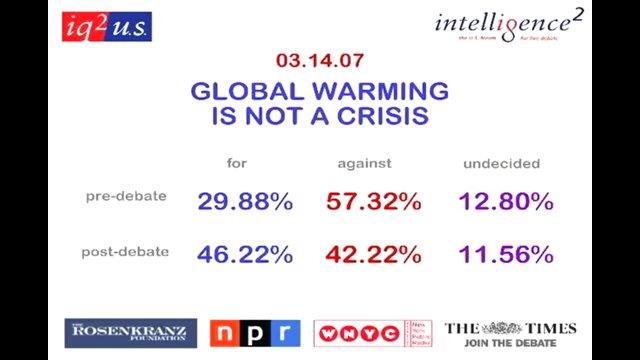
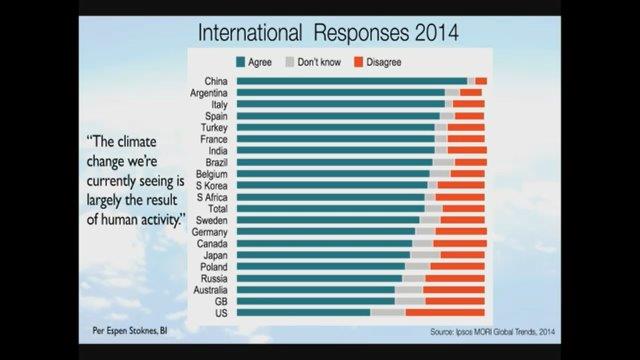

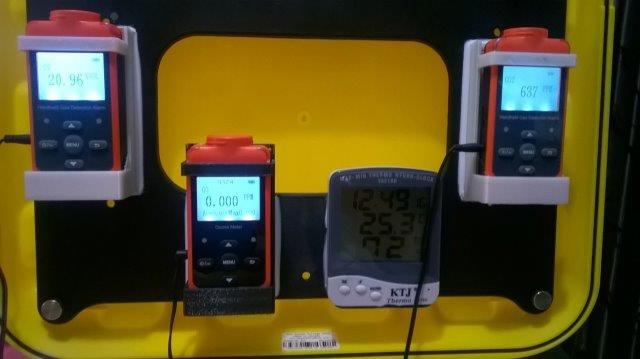

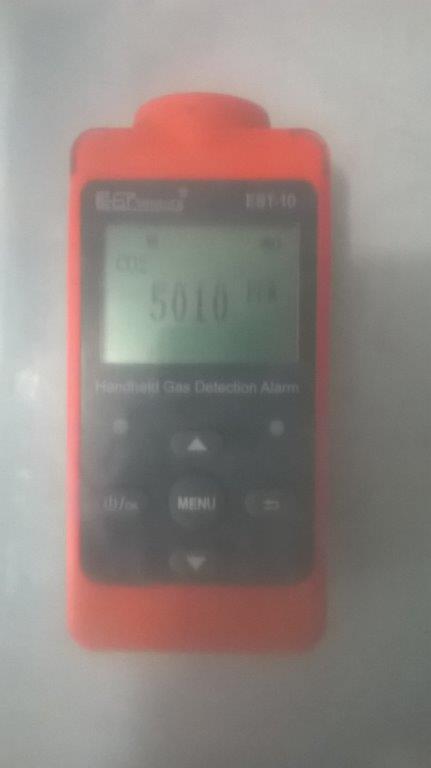
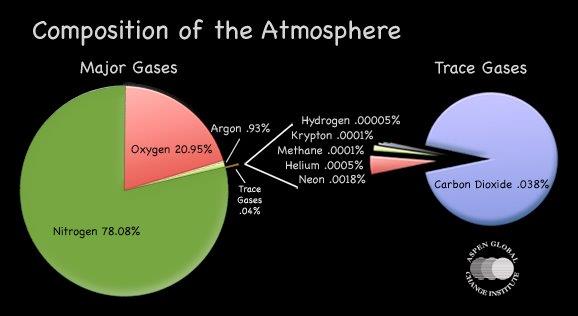

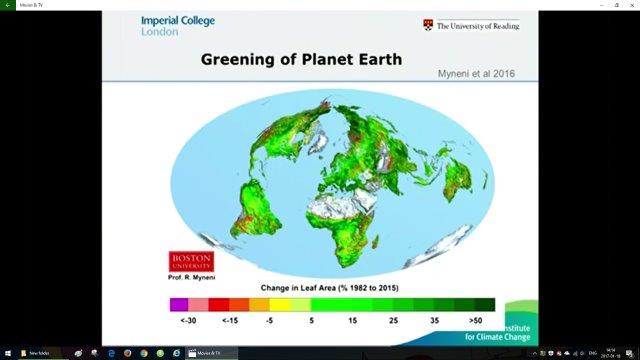
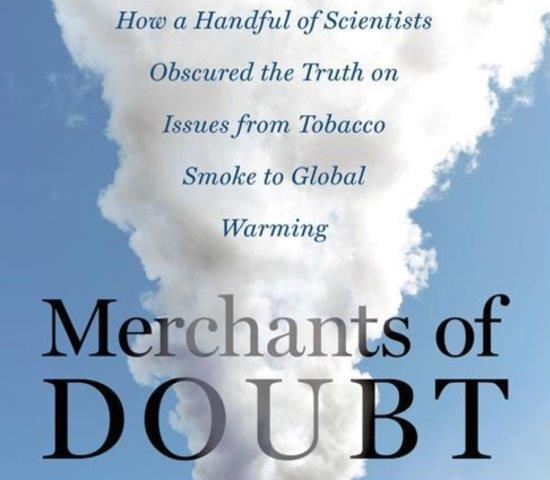


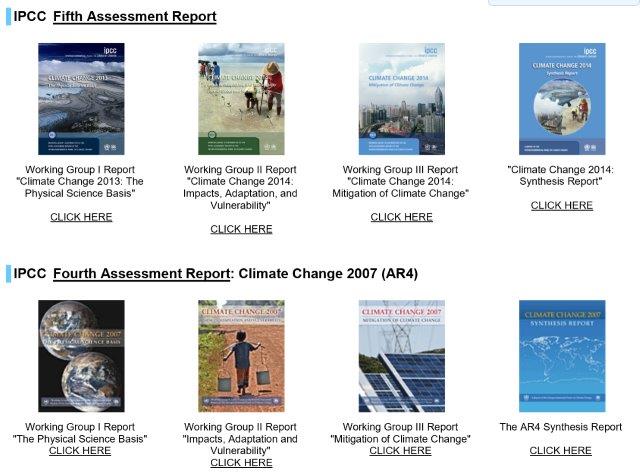
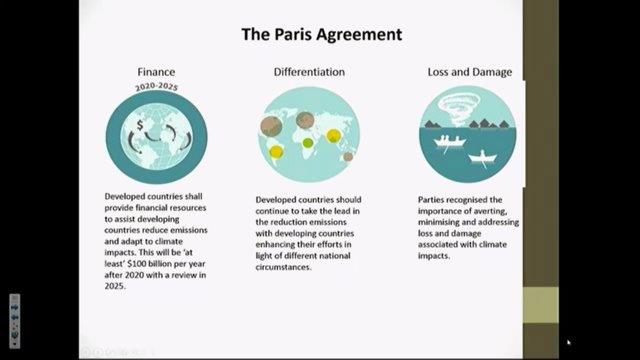
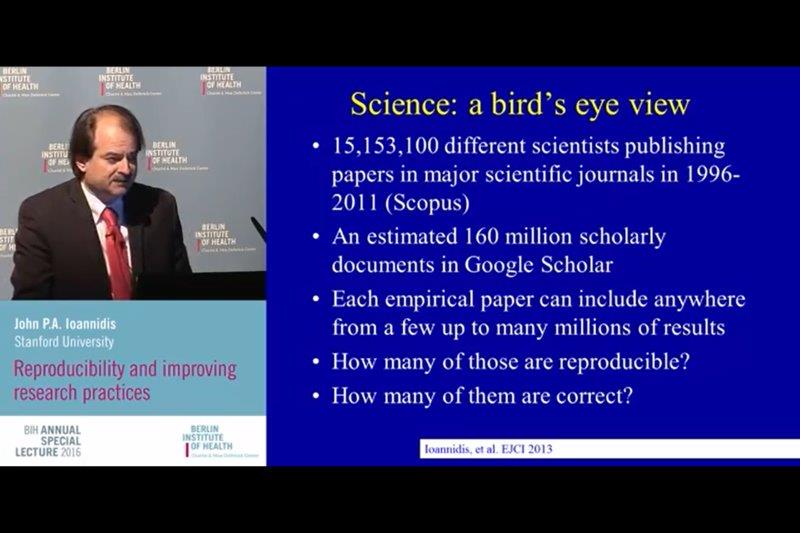
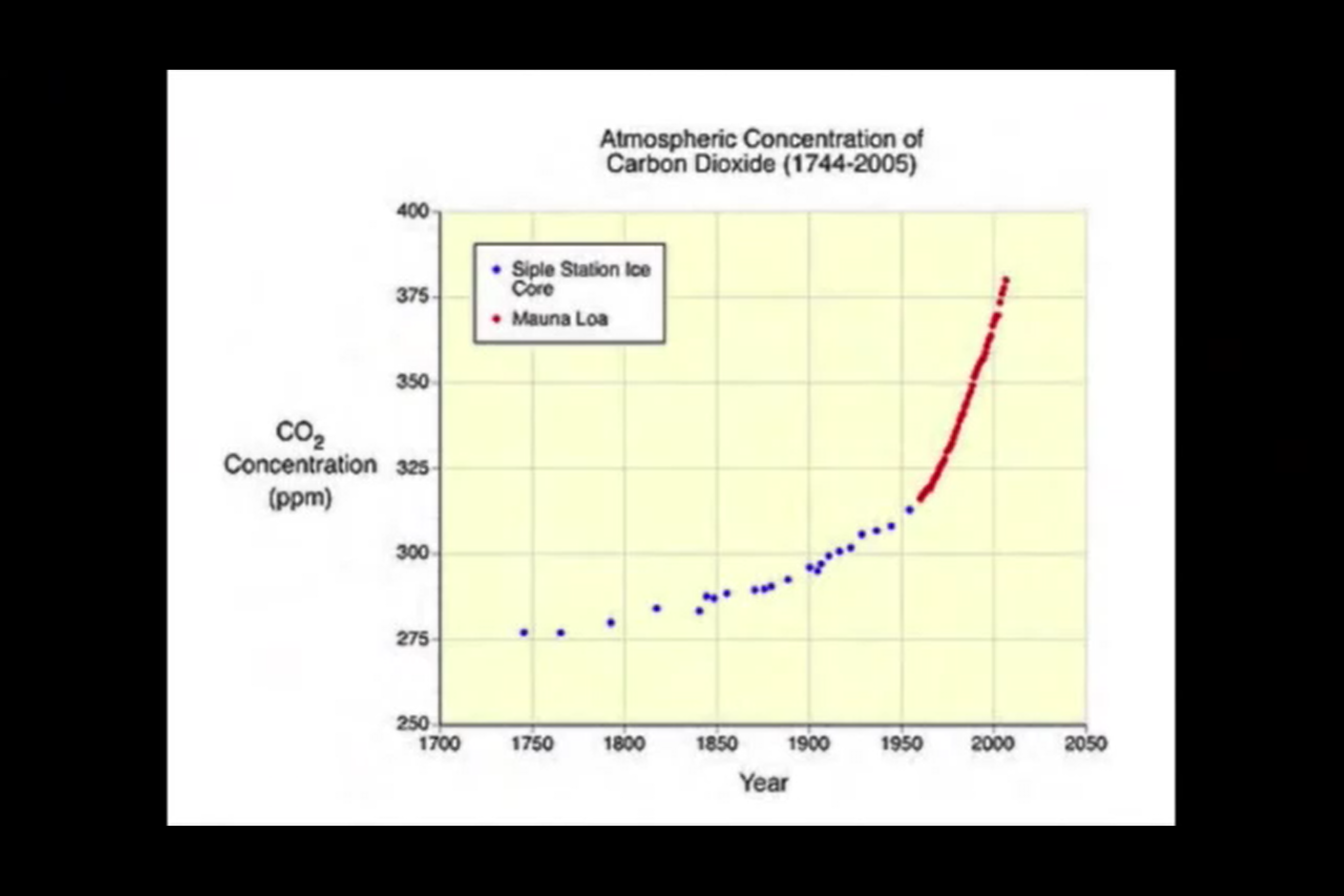

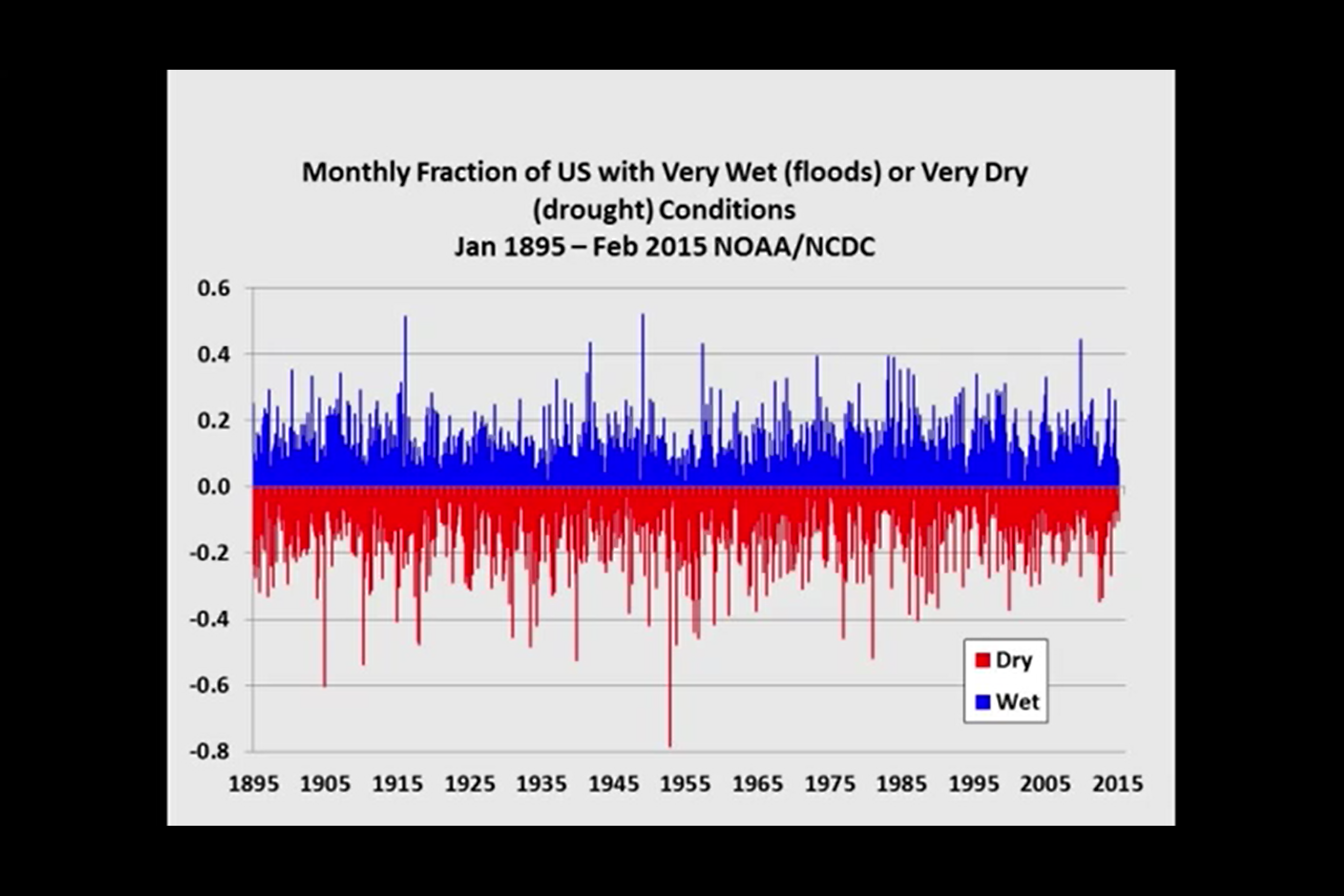

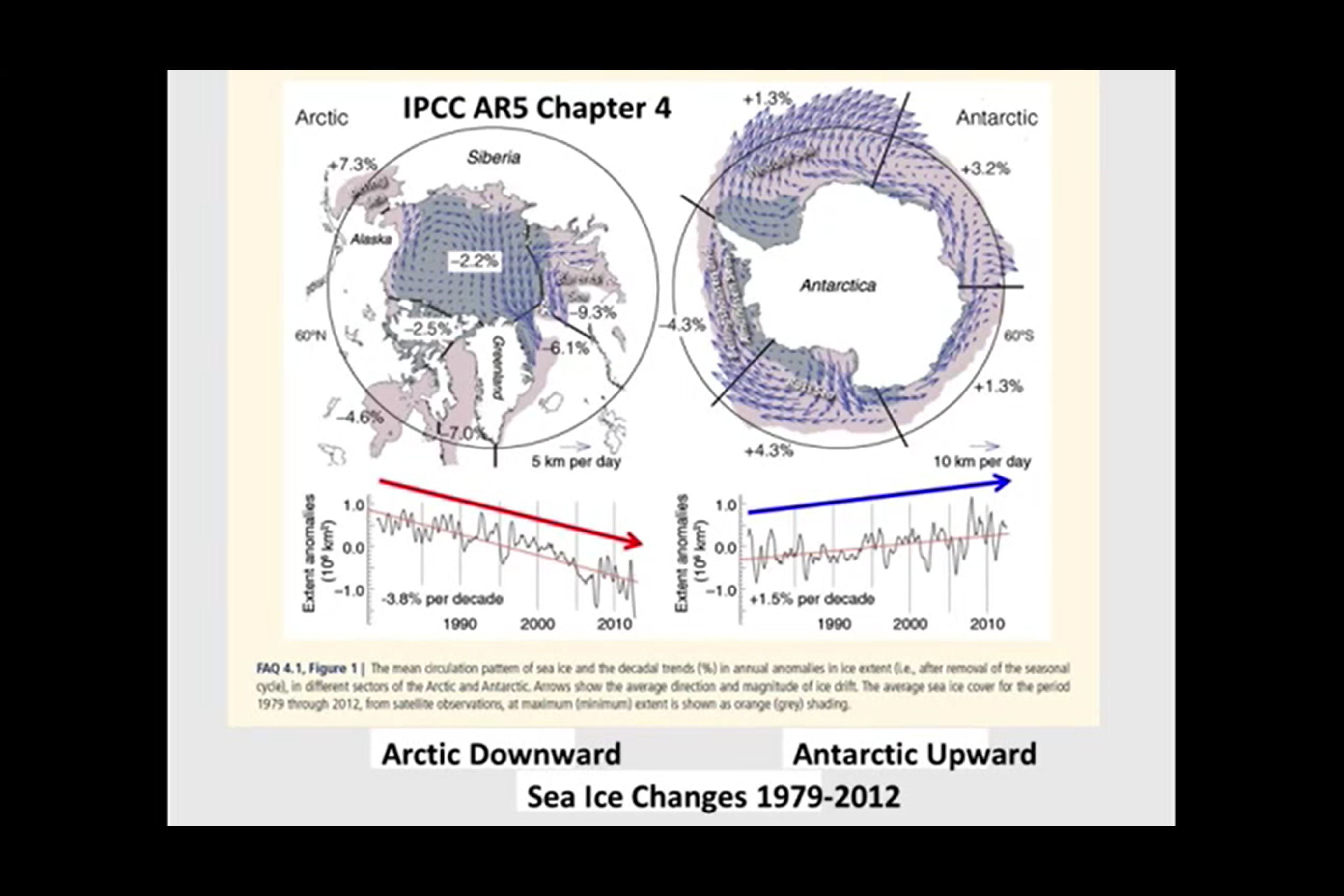


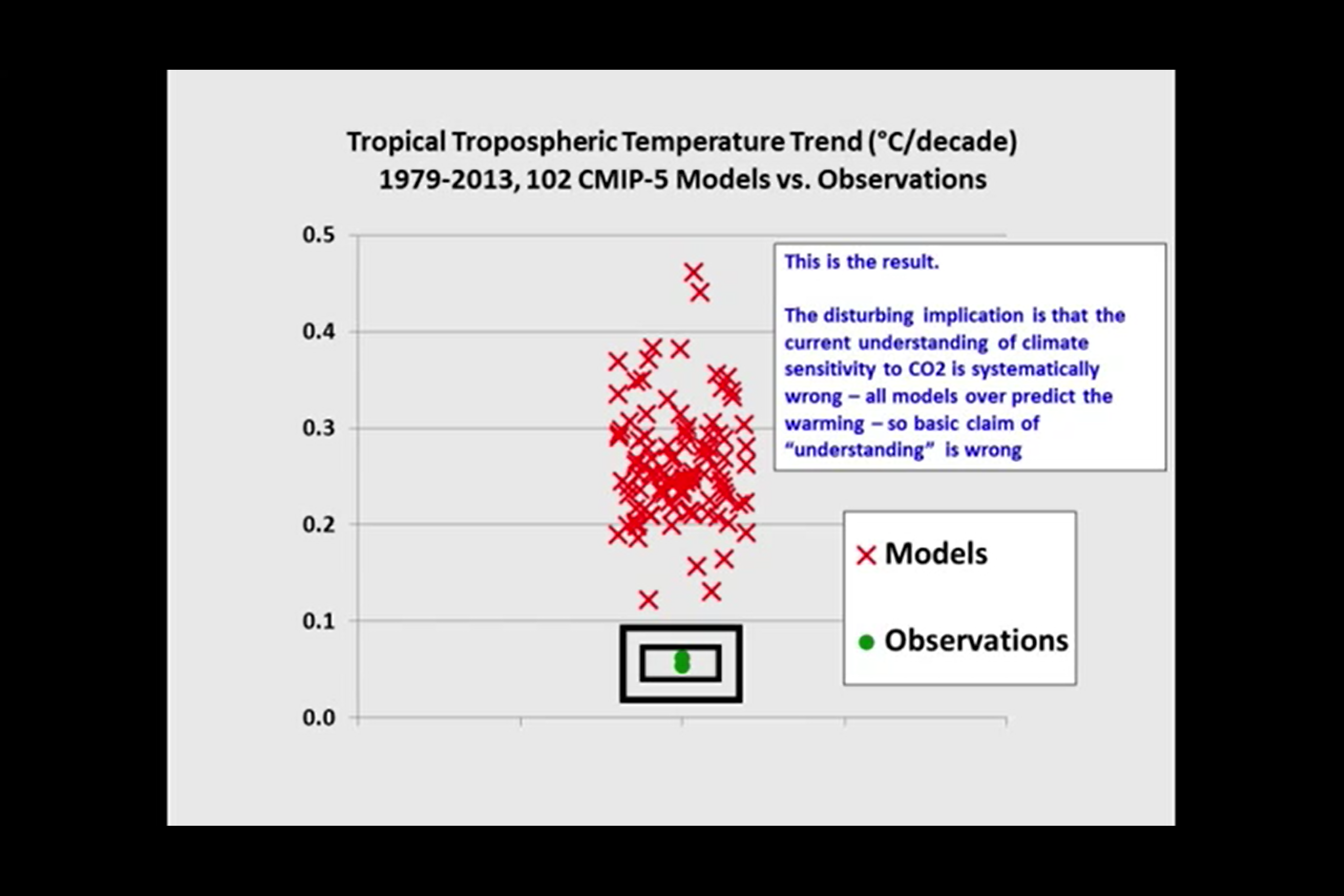
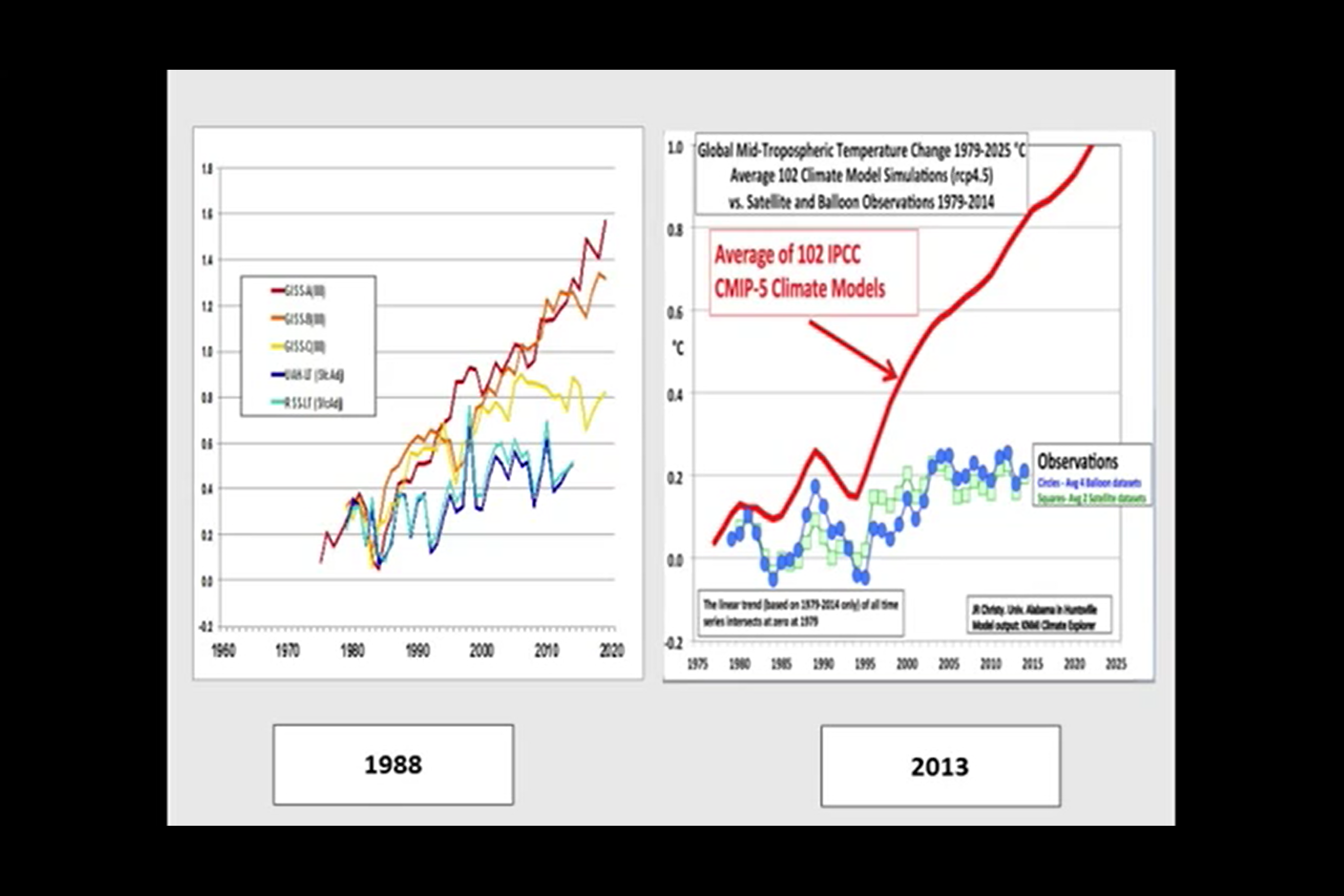
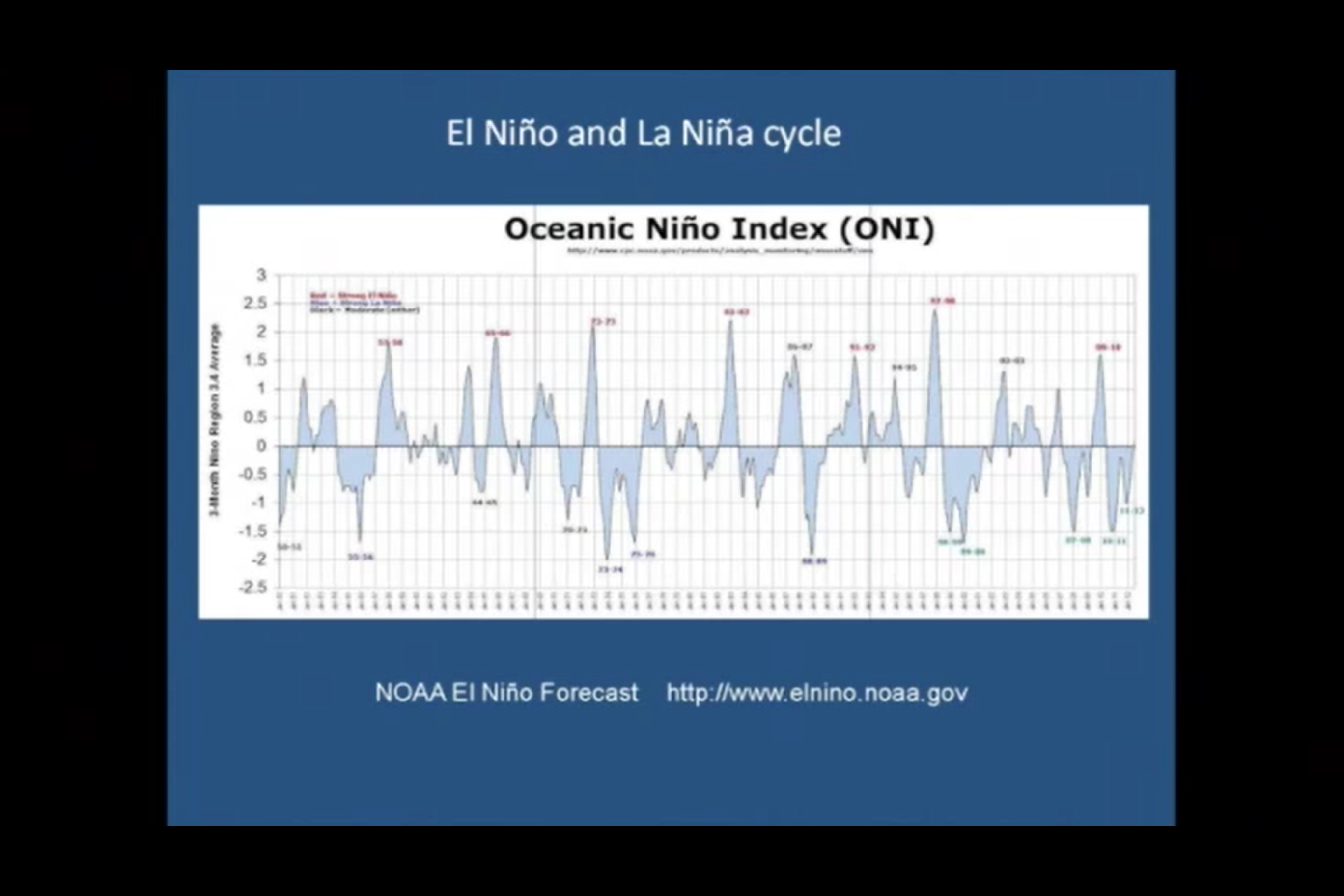
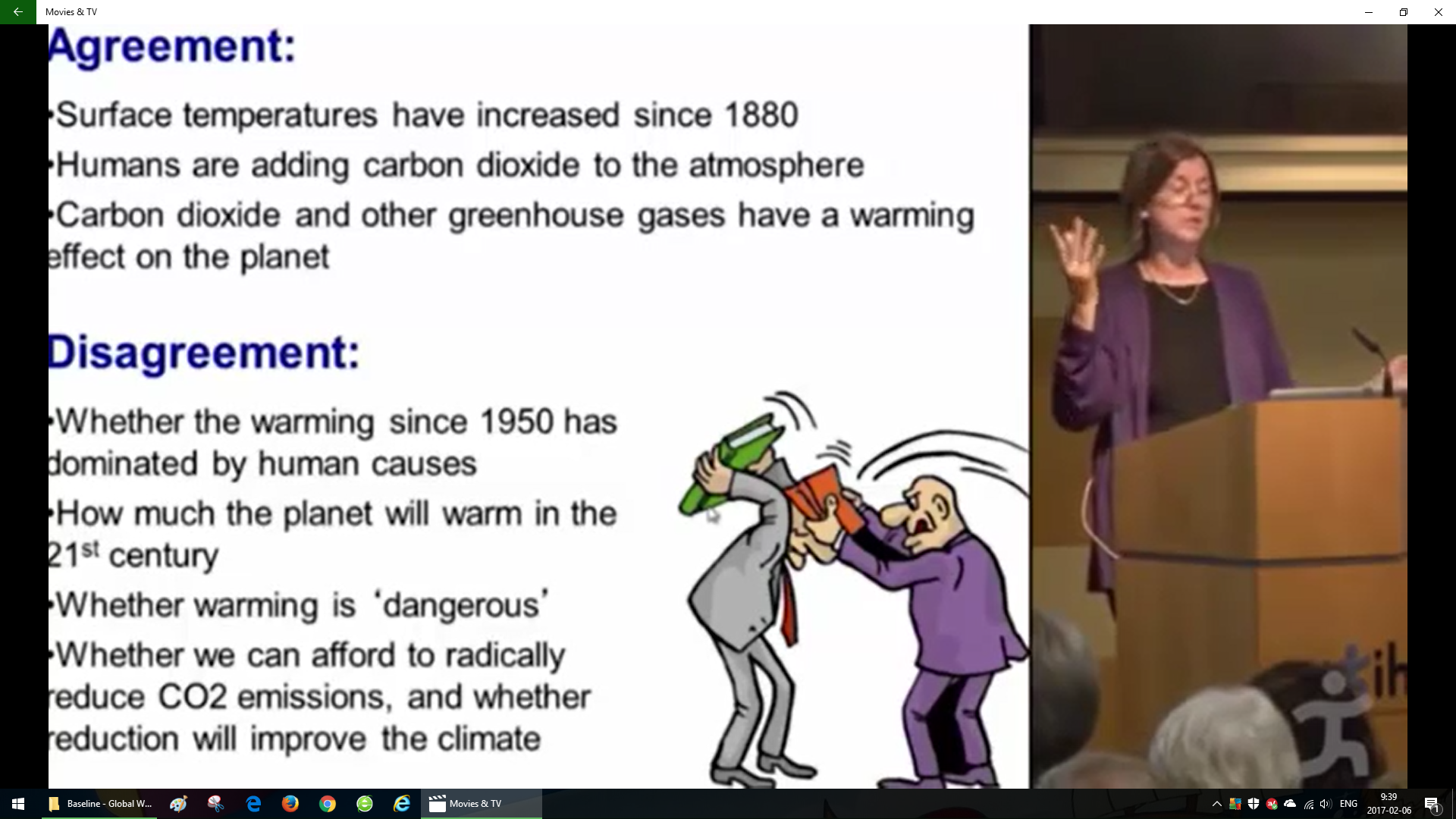
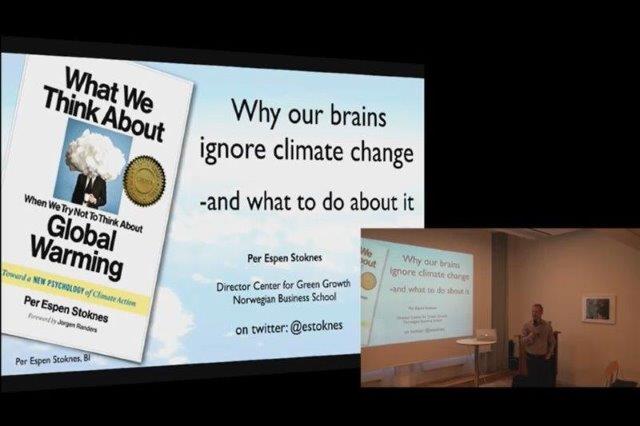
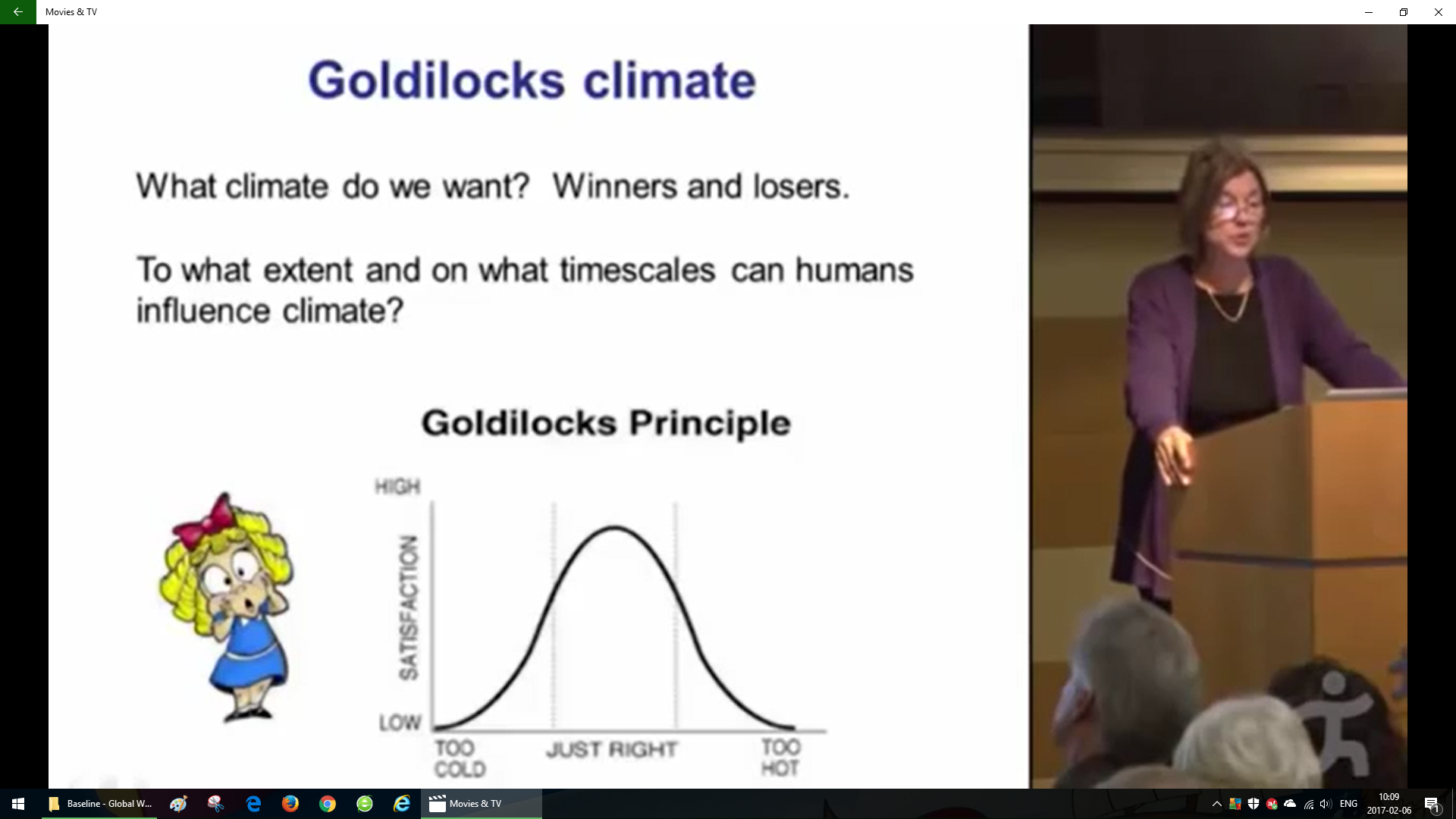

Definitions key to discussions: